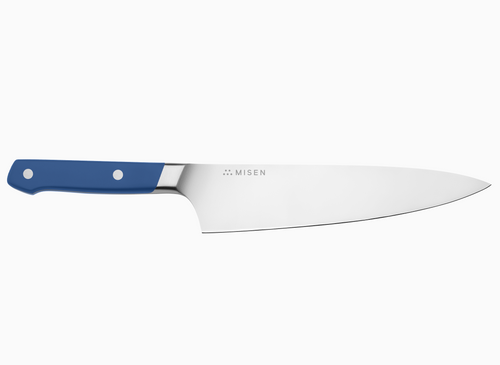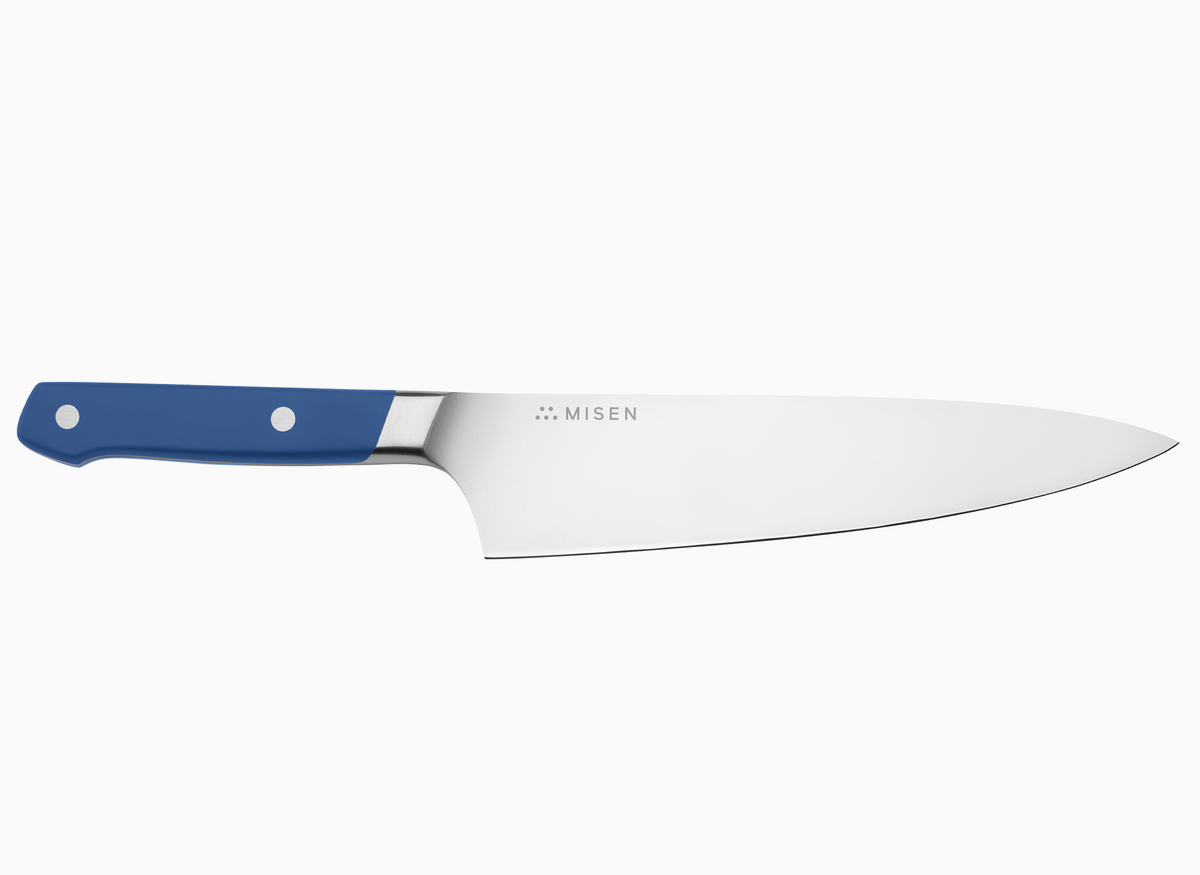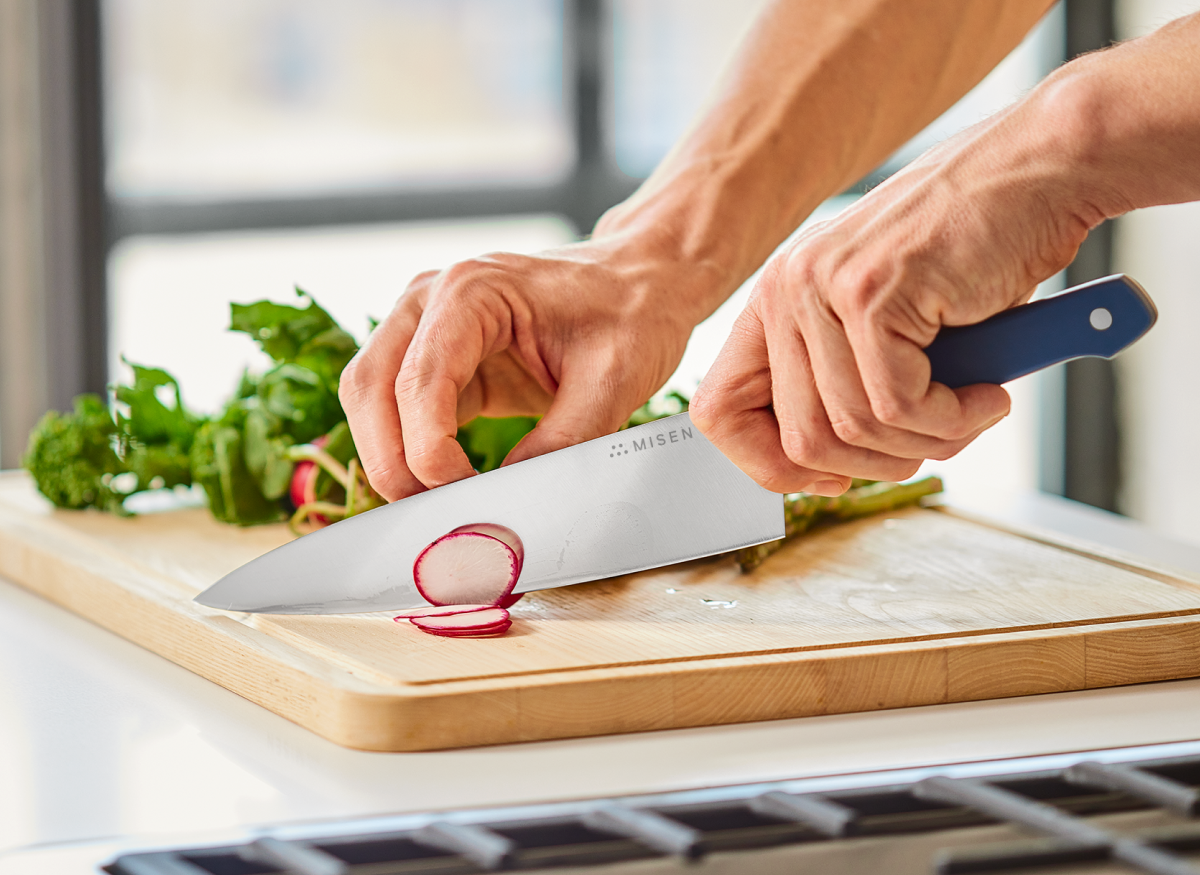What Is Polytetrafluoroethylene: The Science Behind Your Nonstick Pan
 The idea for nonstick pans began when a DuPont chemist accidentally discovered PTFE, one of the slipperiest substances known to man.
The idea for nonstick pans began when a DuPont chemist accidentally discovered PTFE, one of the slipperiest substances known to man.
- PTFE is the lowest friction substance ever discovered.
- There are multiple types of surface coatings used to make nonstick pans, but PTFE is the original and still the most popular.
- Nonstick pans are safe but require proper care.
There was a time when a lot of cooking resulted in burnt crusts, charred bits, and hours spent tediously scrubbing pots and pans. Then came polytetrafluoroethylene (PTFE), the forefather of all the nonstick coatings we know today.
PTFE is the synthetic chemical that enabled the first pieces of nonstick cookware to be produced. A combination of carbon and fluorine atoms, it provided a nonstick, almost frictionless, surface when applied to pots and pans.
Thanks to PTFE, we can now enjoy a softly scrambled omelet, lightly seared scallops, and a fluffy stack of pancakes — without dreading the cleanup that comes after.
While it has made cooking and cleaning comparatively easy, the concept behind nonstick cookware is still a hard one to grasp. How does it work? Is it safe? And what makes a good nonstick pan?
Read on for a breakdown of PTFE and the science behind the synthetic compound that changed the way we cook.
What Is PTFE
 PTFE is not only slippery, it also offers corrosion resistance and heat resistance, and is chemically and electrically inert.
PTFE is not only slippery, it also offers corrosion resistance and heat resistance, and is chemically and electrically inert.
The first nonstick substance was discovered by Roy Plunkett, a chemist at DuPont who was tasked with developing a new refrigerant. Instead, he ended up creating a fine powder with a distinctly slippery texture.
PTFE turned out to provide a distinct combination of friction-, electrical-, mechanical-, and temperature-resistant properties not found in any other material. This specific PTFE formula was later branded by DuPont as Teflon.
Like many trailblazing brand names of the past (Kleenex, Q-tips, Thermos, BAND-AID), Teflon has been used as a generic term for nonstick cookware. But Teflon is a trade name or trademark of Chemours — not all PTFE or other fluoropolymers used in nonstick cookware use Teflon coating.
In fact, many notable companies have since developed their own proprietary PTFE formulas, such Scanpan, which uses titanium-reinforced PTFE, All-Clad, which uses non-reinforced PTFE, and Swiss Diamond International, which uses diamond-reinforced PTFE. There are also other nonstick options available today, such as FEP coatings (fluorinated ethylene propylene) or Xylan (another form of PTFE). Many of the reinforced PTFE formulas help provide abrasion resistance.
At its most basic, PTFE is a synthetic fluoropolymer of tetrafluoroethylene (TFE). It’s a fluorocarbon solid with a high molecular weight compound composed solely of carbon and fluorine atoms. PTFE is corrosion resistant and incredibly versatile, used in everything from aerospace shuttles to computer cables to Gore-tex material.
The combination of properties of PTFE that make it nonstick, however, are that it’s hydrophobic or non-wetting, meaning water or water substances can’t penetrate its surface, and it has a low coefficient of friction, making it one of the slipperiest substances known to man. PTFE is so slippery that even insects can’t get a grip on its surface.
Add those to the fact that PTFE is also extremely tolerant to both low temperatures and high temperatures — its thermal stability can withstand temperatures ranging from negative 328 degrees up to 500 degrees Fahrenheit without degradation — exhibits electric and chemical inertness, and is one of the most affordable fluoropolymers on the market, and you have cookware gold.
PTFE’s Popularity
PTFE is not only in a lot of our everyday items, it’s also achieved lofty positions of esteem. It was published in The Guinness Book of World Records as the “slickest substance.” In the “Physical Extremes” section, under Lowest Friction, it stated that “The lowest coefficient of static and dynamic friction of any solid is 0.02, in the case of polytetrafluoroethylene ([C2F4]n), called PTFE — equivalent to wet ice on wet ice.”
Even the first Teflon pan in the United States, produced by Marion Trozzolo and called “The Happy Pan” is now a proud part of the collection at the Smithsonian Institution.
As for home kitchens, PTFE is still very prevalent — an estimated 70 percent of all skillets sold in the U.S. were nonstick. As far as cooking and cleaning go, nonstick skillets are really one of the most convenient you can get. They prevent food from sticking to the surface, offer excellent chemical resistance to acidic ingredients, and make cleanup a breeze.
How PTFE Works
A nonstick pan is made by covering the cookware surface (typically stainless steel, aluminum, or a combination of steel alloys) with a nonstick coating.
First, the bare metal substrate is sandblasted to ensure good abrasion and optimum adhesion for the PTFE coating process. The surface is oftentimes sprayed with another conductive metal layer before the nonstick coating is applied. Then anywhere from one coat to seven coats of PTFE are sprayed on, with the optional step of adding a clear coat primer before the final application.
Generally, the greater the number and thickness of the layers applied, the higher in quality the nonstick pan will be. However, modern coatings, such as Teflon's FEP coating utilize a one-coat system for a thin film solution. Regardless of thickness, a durable coating is less likely to peel and flake, and retains its nonstick properties for a longer time.
How PTFE Wears Off
 Keep your nonstick cookware in good shape by using wood or silicone utensils, gentle cleaning solutions, and cooking temperatures under 500 degrees Fahrenheit.
Keep your nonstick cookware in good shape by using wood or silicone utensils, gentle cleaning solutions, and cooking temperatures under 500 degrees Fahrenheit.
No matter what type of coating, how high the cost, or how careful a dishwasher you are, the nonstick part of the pan is simply a coating. It will eventually scratch or wear off, and lose its nonstick-iness. It will need to be replaced.
Don’t believe any nonstick cookware that claims to be “scratch-resistant” or “last a lifetime.” While technological advances have created superior, longer lasting coatings, they are still prone to wear and tear — especially given the continuous use often seen with this popular piece of cookware.
That being said, there are several high quality nonstick pans at affordable prices. And there are certain care instructions that may help extend your nonstick’s lifespan. This includes being selective with the utensils used with the pan. Wood and silicone are the best options, while metal utensils should be completely avoided.
When cleaning, also stick with milder materials and solvents. A nonstick surface, by its very nature, doesn’t require harsh abrasives or detergents. Even a soft sponge and regular dish soap will do.
Be careful when storing a nonstick pan as well. Even just stacking them in a pile — with all the frequent removing and returning — is enough to scratch the surface. If you’re unable to hang your pans on a pegboard or in a more spacious area, place something between each pan (a cloth or paper towel) to help reduce the friction.
And finally, keep your cooking temperatures to a maximum of 500 degrees Fahrenheit. At extremely high heat, PTFE starts to become unstable. But this still gives you a generous temperature range to cook in, as the melting point of butter is between 90-95 degrees Fahrenheit, and the boiling point of water is 212 degrees Fahrenheit.
A nifty visual cue is to add some olive oil or butter to the pan before turning on the heat. Both cooking fats smoke at 350-450 degrees Fahrenheit, which provides enough leeway before the pan gets too hot. Should your dish require any higher temperatures (like a prime rib or pork tenderloin), it’s best to opt for a stainless steel piece instead.
The Truth About Nonstick
Nonstick coatings contain chemicals, which have raised some concerns regarding their use, especially in the kitchen. While a component once used in the early days of Teflon cookware, perfluorooctanoic acid (PFOA or C8), has been linked to several health conditions, it has since been removed from production.
In 2005, The Environmental Protection Agency (EPA) asked chemical companies and manufacturers (including Chemours) to phase out PFOA by 2015. The companies agreed and at present, most nonstick cookware sold is PFOA-free.
PTFE and other substances can also break down if not cared for properly. But as long as you don’t overheat the surface, nonstick cookware is safe to use. And when you notice food starting to stick to the pan’s surface, a significant amount of scratches, or the coating chipping or flaking off, then it’s definitely time to get yourself a new nonstick pan.
The Sticking Point
As a home cook, you definitely need a nonstick pan. And now, you know the science and unique properties behind them. A good nonstick pan will provide many great meals and be a much-used piece in the kitchen.
But it also has a limited lifespan. There are a number of high quality options at affordable prices out there, so you don’t need to spend a fortune each time you need a replacement. Just be mindful of when your nonstick pan needs to be replaced, and do so right away.








